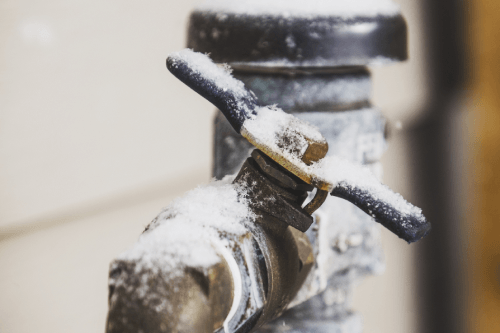How do you really feel in regards to How to prepare your home plumbing for winter weather?

Winter can ruin your plumbing, particularly by freezing pipelines. Right here's how to avoid it from happening and what to do if it does.
Intro
As temperatures decline, the risk of icy pipelines increases, possibly causing pricey repairs and water damage. Recognizing just how to prevent frozen pipes is crucial for homeowners in chilly climates.
Avoidance Tips
Shielding prone pipes
Wrap pipelines in insulation sleeves or make use of warmth tape to shield them from freezing temperature levels. Focus on pipes in unheated or exterior locations of the home.
Home heating methods
Maintain indoor rooms adequately heated up, especially locations with plumbing. Open cupboard doors to allow cozy air to flow around pipelines under sinks.
Just how to recognize icy pipes
Seek reduced water circulation from faucets, uncommon odors or sounds from pipelines, and visible frost on subjected pipelines.
Long-Term Solutions
Structural modifications
Consider rerouting pipes away from exterior wall surfaces or unheated areas. Add additional insulation to attic rooms, cellars, and crawl spaces.
Updating insulation
Purchase high-grade insulation for pipelines, attics, and wall surfaces. Correct insulation aids keep consistent temperatures and reduces the risk of frozen pipelines.
Shielding Exterior Pipes
Yard hoses and outdoor taps
Disconnect and drain yard hose pipes before wintertime. Set up frost-proof faucets or cover outdoor taps with insulated caps.
Understanding Frozen Pipelines
What causes pipes to ice up?
Pipelines freeze when exposed to temperatures below 32 ° F (0 ° C) for expanded durations. As water inside the pipes ices up, it increases, taxing the pipe wall surfaces and potentially creating them to rupture.
Risks and problems
Frozen pipes can bring about water interruptions, residential property damage, and costly repair work. Ruptured pipes can flooding homes and create substantial architectural damage.
Indications of Frozen Water Lines
Recognizing frozen pipes early can prevent them from rupturing.
What to Do If Your Pipes Freeze
Immediate actions to take
If you presume icy pipelines, maintain taps open up to alleviate stress as the ice melts. Use a hairdryer or towels soaked in hot water to thaw pipes slowly.
Verdict
Protecting against icy pipes calls for aggressive measures and fast responses. By understanding the causes, indications, and preventive measures, property owners can shield their plumbing throughout cold weather.
5 Ways to Prevent Frozen Pipes
Drain Outdoor Faucets and Disconnect Hoses
First, close the shut-off valve that controls the flow of water in the pipe to your outdoor faucet. Then, head outside to disconnect and drain your hose and open the outdoor faucet to allow the water to completely drain out of the line. Turn off the faucet when done. Finally, head back to the shut-off valve and drain the remaining water inside the pipe into a bucket or container. Additionally, if you have a home irrigation system, you should consider hiring an expert to clear the system of water each year.
Insulate Pipes
One of the best and most cost-effective methods for preventing frozen water pipes is to wrap your pipes with insulation. This is especially important for areas in your home that aren’t exposed to heat, such as an attic. We suggest using foam sleeves, which can typically be found at your local hardware store.
Keep Heat Running at 65
Your pipes are located inside your walls, and the temperature there is much colder than the rest of the house. To prevent your pipes from freezing, The Insurance Information Institute suggests that you keep your home heated to at least 65 degrees, even when traveling. You may want to invest in smart devices that can keep an eye on the temperature in your home while you’re away.
Leave Water Dripping
Moving water — even a small trickle — can prevent ice from forming inside your pipes. When freezing temps are imminent, start a drip of water from all faucets that serve exposed pipes. Leaving a few faucets running will also help relieve pressure inside the pipes and help prevent a rupture if the water inside freezes.
Open Cupboard Doors
Warm your kitchen and bathroom pipes by opening cupboards and vanities. You should also leave your interior doors ajar to help warm air circulate evenly throughout your home.

As a devoted reader on Winter Plumbing Precautions: Preventing Frozen Pipes, I figured sharing that short article was essential. Enjoyed reading our posting? Please share it. Let other people find it. Thanks a lot for your time. Please pay a visit to our site back soon.
Call Today